The Sun’s mass is approximately 2-10³⁰ kilograms, which is equivalent to two thousand billion billion billion billion billion billion billion billion kilograms or two million billion billion billion trillion tons. More precisely, it is 1.98892-10³⁰ kilograms, which is equal to 332,940 times the mass of planet Earth.
It is difficult to comprehend the enormity of the Sun’s mass (and space itself is difficult to comprehend), but the Sun’s mass represents 99.866% of the total mass of the Solar System. In contrast, everything else in the Solar System, including planets, comets, and dust, only accounts for 0.134% of the total mass of our celestial “family”.
The Sun possesses no mass whatsoever. This idea is not relevant to celestial entities. We cannot state: “The Sun has a mass of two times ten to the thirtieth power kilograms”. It lacks any mass at all. Mass is a measurement of the amount of matter in an object, while weight is a force exerted by an object due to gravity. The Sun exists in a state of weightlessness, not exerting any force on a surface. As a result, we can only discuss the mass of the Sun.
Now, here is a remarkably straightforward question: so simple that three decades ago it was believed that even a seventh-grade student could answer it. In reality, however, it is not that simple… So, the question is: how did scientists determine the mass of the Sun? And the mass of the Earth? If they cannot be weighed?
and they are not weighed, they are calculated. It took humanity 2,500 years to develop the means of calculating the masses of celestial objects.
Now the process is straightforward: to determine the mass of the Sun, one must utilize the following formula:
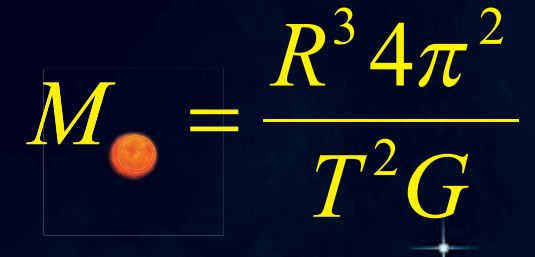
Furthermore, we can incorporate all the given information: R represents the distance between the Earth and the Sun, which is approximately 150 million kilometers or 1.5 x 10^11 meters. T stands for the Earth’s year expressed in seconds. Finally, G denotes the gravitational constant. By substituting these values, we can determine the mass of the Sun.
So, how did we arrive at this particular equation? Well, it all began with the arduous task of determining the shapes of both the Earth and the Sun. It was only in ancient Greece that the realization came that both are indeed spheres, and not flatbreads as previously believed. Then, in 1543, Copernicus revolutionized our understanding by providing mathematical calculations that demonstrated that it is the Earth that orbits the Sun, and not the other way around.
Building upon Copernicus’ work, Kepler came along in 1609 and derived the laws of planetary motion. Around the same time, Galileo formulated the law of inertia. These groundbreaking contributions paved the way for Newton, who in 1671 refined the third law of planetary motion and formulated the Law of Universal Gravitation.
And so, we arrive at that magical formula that allows us to calculate the mass of any celestial body. It is the culmination of centuries of scientific progress and the tireless efforts of brilliant minds.
However, there was an additional aspect – the gravitational constant, also known as the Universal Constant. Sir Isaac Newton hypothesized its existence in 1671, but it wasn’t until 1798 that its precise value was determined. Furthermore, it took even more time to accurately measure the distance between the Earth and the Sun through observation. Only after these calculations were made, the following was established:
The mass of the Sun is equivalent to two times ten to the power of thirty kilograms.
Interestingly, the refined Newton-Kepler law is the only one in the field of astrophysics that enables the direct determination of an object’s mass through observations. Mass is an incredibly significant physical quantity as it essentially governs all other characteristics of celestial bodies.
While my usual intent is to criticize, I must admit that I am subscribing to your content. Your discussions on various magical phenomena are incredibly well-presented, and I eagerly await the next installment :))

How fortunate I am that informative reading has not yet been prohibited.
It is extremely straightforward
to take a grand scale, place the sun on one side, and counterbalance it with the earth. We are aware of the earth’s weight. More accurately, its mass. Then we poured sand until the scales were balanced. We observed the ratio of sand to the planet Earth. And we made all the calculations. It’s a simple process. And here you are discussing formulas.
Is there water on the Sun? How is it possible?
The Sun, which is a massive ball of hydrogen-helium plasma, contains various other substances that are heated to extremely high temperatures. Surprisingly, one of these substances is water, and after many years of intense scientific discussion, evidence of its presence on the Sun has been discovered.
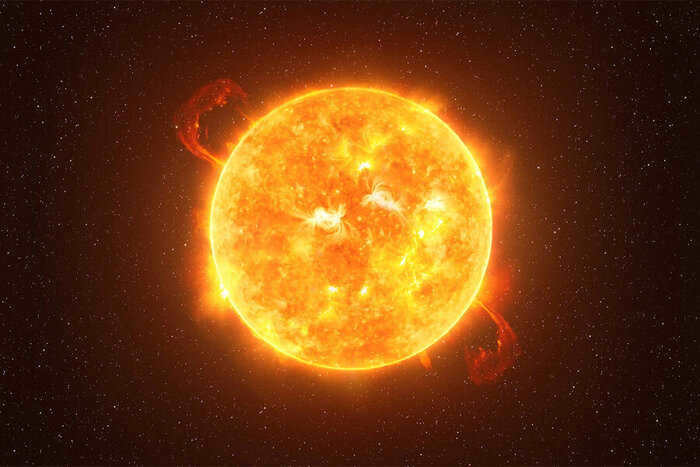
Water exists throughout the entire solar system. Some of its molecules have existed since before our star and all other celestial bodies formed. These molecules were present in the massive cloud of gas and dust from which everything in our corner of outer space originated. It is therefore not surprising that the Sun, with its mass being over 99 times that of all other matter in our system, absorbed some of this moisture during its formation. The question is whether these molecules could have remained as water or if the intense heat of the Sun caused them to separate into hydrogen and oxygen.
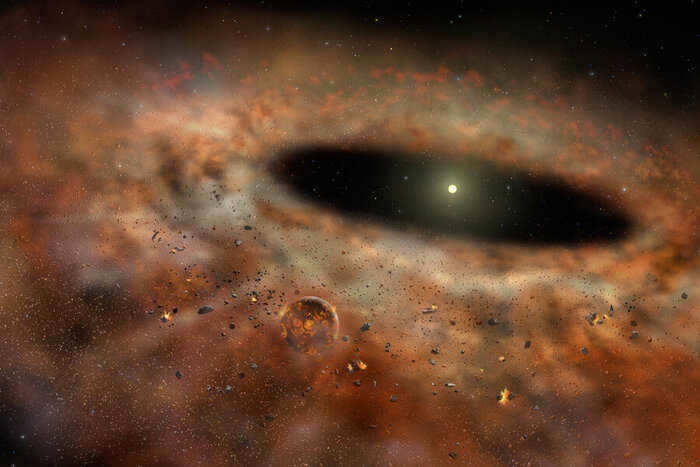
The surface temperature of the Sun is approximately 5500 degrees Celsius, which is incredibly high. However, it is important to note that this temperature is just an average. The Sun has dark spots that are actually cooler than the surrounding areas. These spots have a temperature of around 3,500 degrees Celsius. While still extremely hot, this temperature would allow water molecules to exist without completely breaking apart.
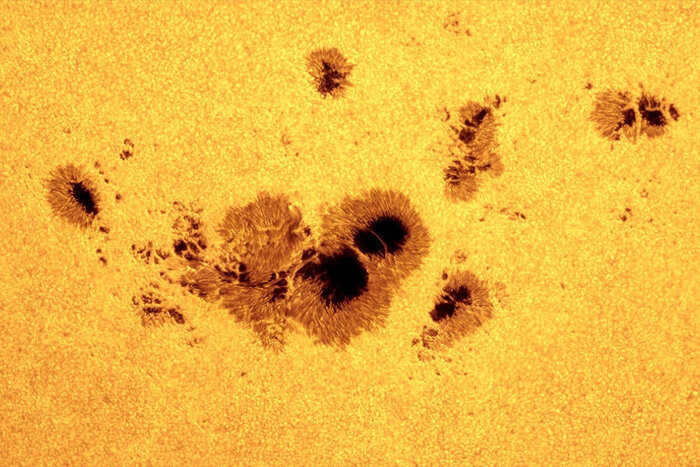
However, despite the possibility of vapor existing on the surface of a star, there is still no concrete evidence of its presence. Scientists have been attempting to confirm its existence on the Sun for a long time, but their findings have been inconclusive. One method they have used is spectroscopy, which involves analyzing the wavelengths of light emitted by the star. Each element has a distinct signature, but determining the presence of water is slightly more complex.
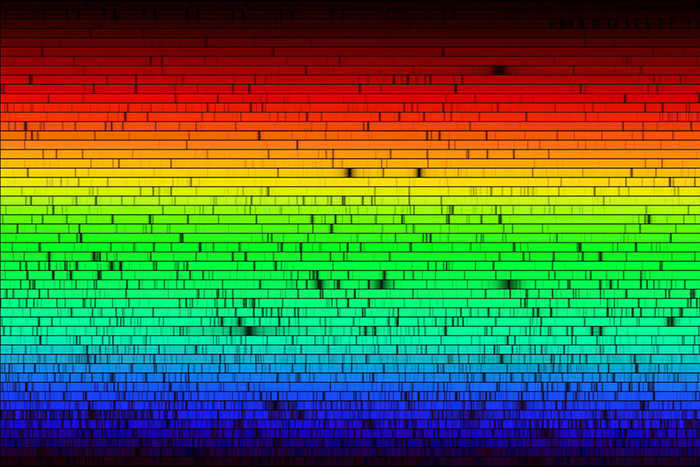
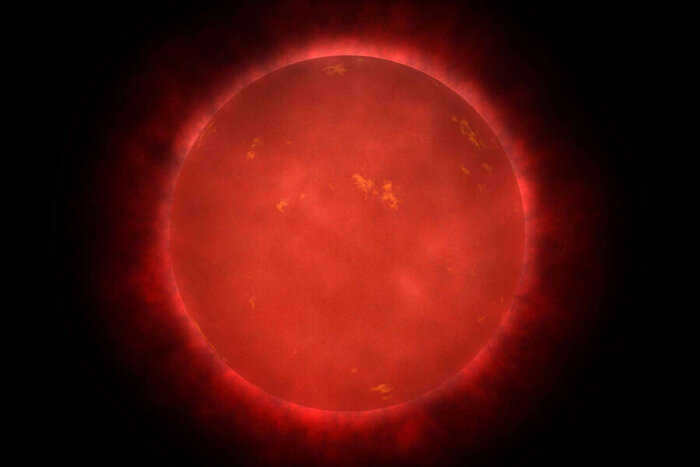
Although it may seem absurd and contrary to common sense, the presence of water on the surface of a scorching fireball is indeed a fact. This discovery could have significant implications for the study of other star systems. For many years, astronomers have been analyzing the atmospheres of exoplanets by observing the spectrum when these celestial bodies pass in front of their star. It is no surprise that water is the primary target of their observations. However, the detection of water must now come with a disclaimer, as it appears that vapor can exist on the stars themselves.
Thank you for taking the time to read this article! If you enjoyed it, you have the option to show your support by giving it a “thumbs up” or subscribing to this channel. We would also like to inform you that we have our own Telegram channel where we regularly share fascinating posts about space and astronomy.
We genuinely value each and every one of our readers. If you would like to contribute financially (by using the button below), we will include your name or nickname at the end of our next post as a way of expressing our gratitude for your generosity and support!

Sun’s Surface
This footage was captured using the X-ray telescope aboard the Hinode satellite.

A celestial body that has previously traversed the solar system
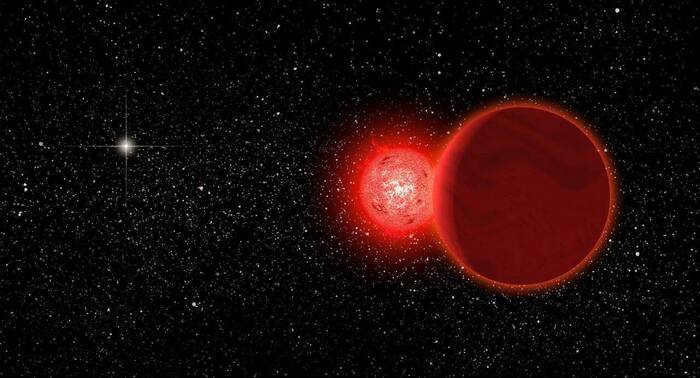

Scholz’s star is a diminutive red dwarf with a mass that is eight times smaller than that of the Sun.
What makes it captivating is its past. It is currently situated 20 light-years away. However, a mere 70,000 years ago, Scholz’s star came within 0.8 light-years (or 52,000 astronomical units) of the Sun, which is much further than the projected distance Gliese 710 will traverse. Scholz’s star grazed the outer reaches of the Oort cloud, potentially perturbing comets and altering their trajectories.
The arrangement of planetary movements within the solar system
A sophisticated depiction of the physical world.
The vanishing satellites of our celestial neighborhood.
Humans have a tendency to misplace belongings on a regular basis, whether it be keys, eyewear, or currency. It is not typical to suspect sizable celestial objects of experiencing similar occurrences. The human race has been observing these objects for millennia and seemingly failed to detect any such phenomenon. However, numerous indicators suggest that certain planets in our solar system have, at various points in time, experienced the loss of satellites orbiting around them.
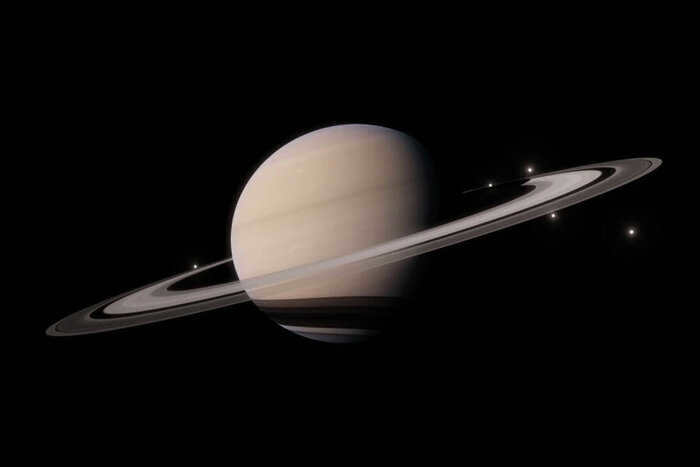
The most evident indications indicate Saturn, that recently had the largest “satellite constellation” with a minimum of 145 units. This planet is renowned for its splendid rings, composed of pebbles, ice, and dust, and flawlessly reflecting the sun’s rays. They shine almost as brilliantly as the planet itself and conceal a highly intriguing secret. The ring system is significantly younger than Saturn. This was confirmed in 2017 with the Cassini spacecraft. It had spent nearly 20 years in space by that time, and the program’s experts believed it was time to undertake a series of risky flybys through Saturn’s rings. Measurements during these maneuvers demonstrated that the total mass of the ring matter is considerably lower than it would have been if the ring system had been present around the planet for its entire 4.5 billion-year existence.

An artist’s rendering of the rings shows the Cassini interplanetary station flying over Saturn’s rings.
The rings, composed mostly of ice, are expected to fade over time and gather more dust. Therefore, the older the rings are, the heavier the material they contain. Data from Cassini has revealed that the rings are only a few tens of millions of years old. The question arises: why did they form so late? In 2022, a group of astronomers published a paper proposing that these rings are remnants of a Saturn satellite that came too close to the planet and was torn apart into tiny fragments.


Saturn without its iconic rings and the hypothetical satellite Chrysalis, as depicted by an artist
Let’s venture closer to the Sun and delve into the realm of Jupiter. This colossal celestial body seems to have lost a considerable number of its satellites over time. Presently, there are a total of 95 known satellites orbiting Jupiter, but billions of years ago, the count was even higher. While one of Saturn’s satellites met a spectacular demise, Jupiter’s surplus satellites were assimilated by the planet itself. By employing computer simulations to reconstruct the early history of our solar system, astronomers have arrived at this rather disheartening conclusion. The simulations took into account the amount of matter necessary for the formation of Jupiter and its current satellites, which includes the prominent Galilean moons Ganymede, Callisto, Io, and Europa. These four moons alone account for over 99% of the mass encircling this gas giant.
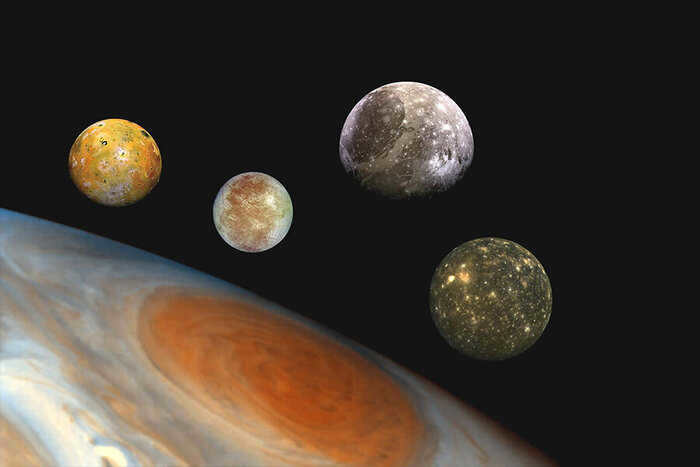
The outcome of the digital experiment yielded an unexpectedly interesting result. It transpired that there was sufficient material during that era to create at least four additional complete clusters of “Galilean moons” in close proximity to Jupiter. It is evident that computer simulations cannot be entirely precise, particularly when it concerns events that transpired billions of years ago. Nevertheless, some specialists propose that these satellites might have indeed emerged during that remote era, and have even outlined the factors that contributed to their eventual disappearance.
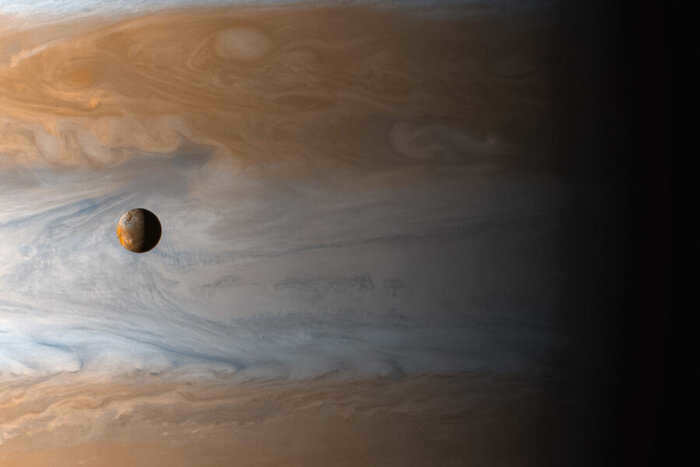
The Cassini interplanetary station provides a unique perspective on Jupiter’s moon Io
Scientists believe that these celestial bodies were destroyed due to their excessive consumption. They had an abundance of building materials, causing them to become excessively massive. As a result, they lost their velocity and eventually succumbed to the gravitational pull of the colossal planet. Eventually, they would enter a death spiral and become absorbed by Jupiter. This gradual process occurred over millions of years during the planet’s formation, leading to the demise of numerous satellites. According to this theory, the moons discovered by Galileo are remnants of the final generation, as they managed to survive due to their insufficient material to reach critical mass.
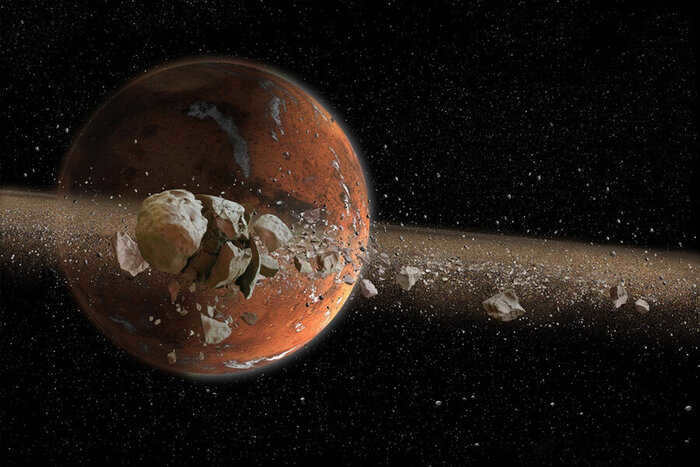
And in 2021, a hypothesis was put forward by a scientific team suggesting that Mars, between 1 and 2.7 billion years ago, acquired sole ownership of a single asteroid measuring approximately 30 kilometers in diameter. This asteroid subsequently disintegrated to give rise to the formation of Phobos and Deimos. However, a year later, this publication came under criticism from other scientists who conducted computer simulations and identified glaring flaws in the aforementioned scenario. Based on their calculations, if Phobos and Deimos had indeed formed from the fragmentation of a larger object, they would have rapidly collided with each other, resulting in the production of a significantly greater amount of debris.
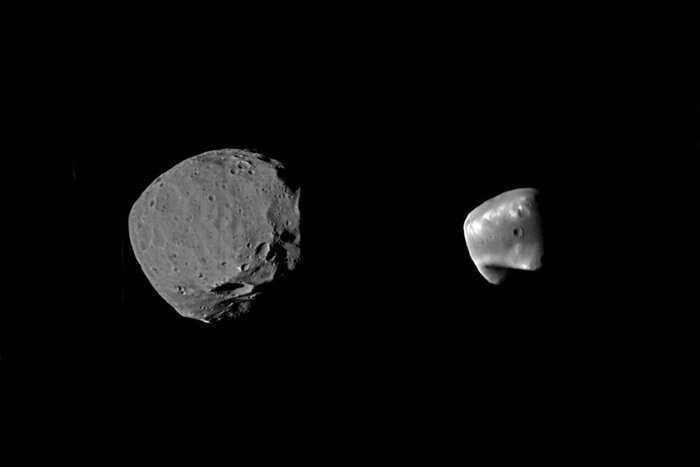
This is where the article concludes. What comes next are my thoughts on Picaboo (and more).
Hey there, I joined Picaboo not too long ago and had very little knowledge about this community beforehand. I was pleasantly surprised when my posts started receiving thousands of views right from the beginning. And to top it off, yesterday my article was even featured in the official Picaboo group on Vkontakte. I was also amazed by the engagement from readers. You guys don’t hold back on the “pluses” and actively leave comments on posts. Thank you!
After spending almost three years developing my channel on Zen, I have decided to shift my focus to my Peekaboo page and make it my primary platform. Despite having over 50,000 subscribers on Zen, the recommendation system has severely limited the reach of my articles, resulting in only 100-150 reads. Additionally, the recent changes to Zen’s monetization system have significantly decreased my daily income to just 200 rubles. Given these circumstances, I believe it is time to move on from this platform. If you share an interest in space and related topics, I invite you to join our group on Peekaboo. Here, you will find a wealth of fascinating and informative content awaiting you!
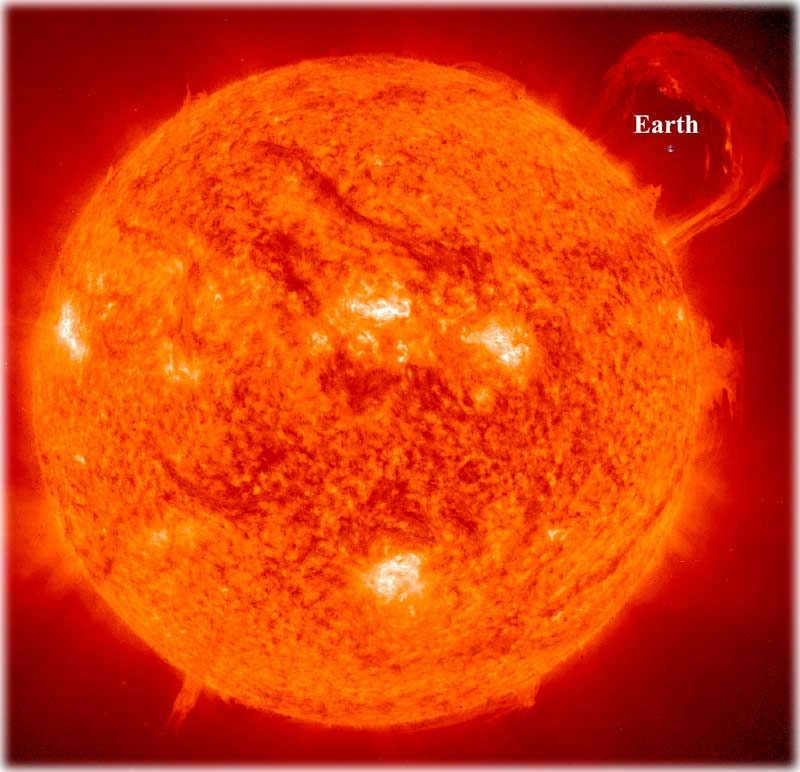
The Sun holds the most mass in the Solar System, making it the largest celestial object with 99.86% of the total mass.
In comparison to other stars, the Sun is considered to be of average size and even classified as a small star. There are stars that have a much greater mass and therefore are much larger than the Sun. For instance, Betelgeuse, a red giant in the Orion constellation, is estimated to be 1,000 times bigger than the Sun. Moreover, VY Canis Majoris, the largest known star, is approximately 2,000 times larger than the Sun. If we were to place VY Canis Majoris within our own Solar System, its gravitational force would extend beyond the orbit of Saturn.
The Sun’s size is undergoing a transformation. In the coming times, once it has consumed all of its available hydrogen fuel in its core, it will undergo a stellar metamorphosis, expanding into a red giant. It will engulf the orbits of Mercury and Venus, and conceivably even the Earth’s orbit. In just a few million years, the Sun’s size will balloon to a magnitude 200 times greater than its current dimensions.
Following its red giant phase, the Sun will contract and evolve into a white dwarf star. At this stage, it will assume a size comparable to that of the Earth.
The weight of the Sun
The weight of the Sun amounts to 1.98892 x 10^30 kilograms. It’s an incredibly large number, and quite challenging to comprehend, so let’s express the weight of the Sun with all the zeros.
Still finding it hard to wrap your head around? Let’s make a comparison. The weight of the Sun is 333,000 times that of the Earth. It is 1048 times the weight of Jupiter and 3498 times the weight of Saturn.
In reality, the Sun constitutes 99.8% of the total mass in the entire Solar System, with Jupiter and Saturn accounting for most of the remaining mass. To say that the Earth is an insignificant dot would be an understatement.
When astronomers attempt to determine the mass of a celestial object, they utilize the mass of the Sun as a point of comparison. This is commonly referred to as the “solar mass.” Consequently, objects such as black holes are measured in terms of solar masses. For instance, a massive star might have a mass of 5-10 solar masses, while a supermassive black hole can possess hundreds of millions of solar masses.
Astronomers represent this concept with the symbol M, which resembles a circle with a dot in the center – M⊙. To denote a star with a mass of 5 solar masses, one would write 5 M⊙.
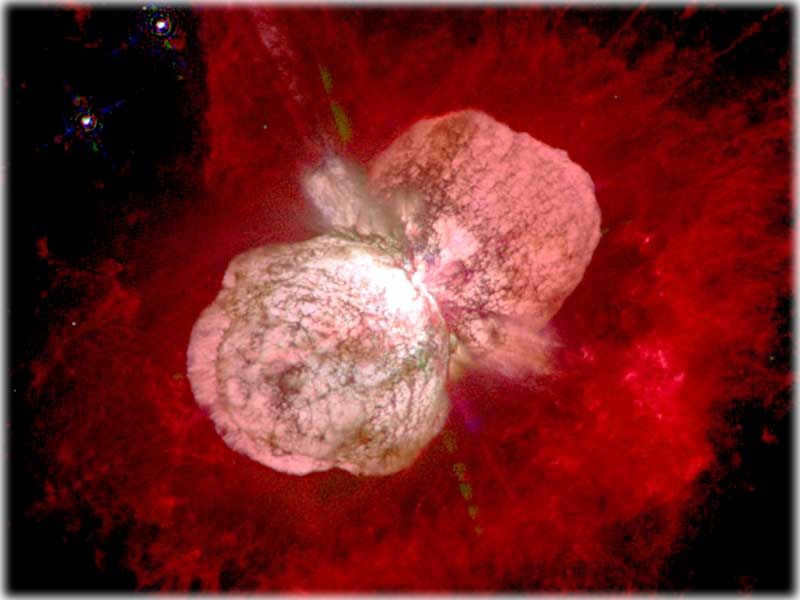
Eta Carinae, one of the most massive stars known. Photo provided by: NASA.
The Sun is enormous, but it is not the largest star in existence. Actually, the most massive star we are aware of is Eta Carinae, which possesses a weight equivalent to 150 times that of the Sun.
The mass of the Sun is gradually diminishing over time. Two processes are contributing to this phenomenon. Firstly, nuclear fusion reactions occur in the Sun’s core, transforming hydrogen atoms into helium. During this process, some of the Sun’s mass is lost and converted into energy. The heat we experience from the Sun is a result of this loss of solar mass. Secondly, there is the solar wind, which constantly expels protons and electrons into outer space.
The weight of the Sun in American tons is 2.1924 x 10^27 American tons (1 American ton = 907.18474 kg)
Sun’s Size
The size of the Sun measures 1.391 million kilometers or 870,000 miles.
Let’s consider this number in context again. The Sun’s size is 109 times the diameter of the Earth. It is also 9.7 times the diameter of Jupiter. It is truly massive.
However, the Sun is not the largest star in the Universe. The largest known star, VY Canis Majoris, is believed to have a size that is 2100 times the diameter of the Sun.
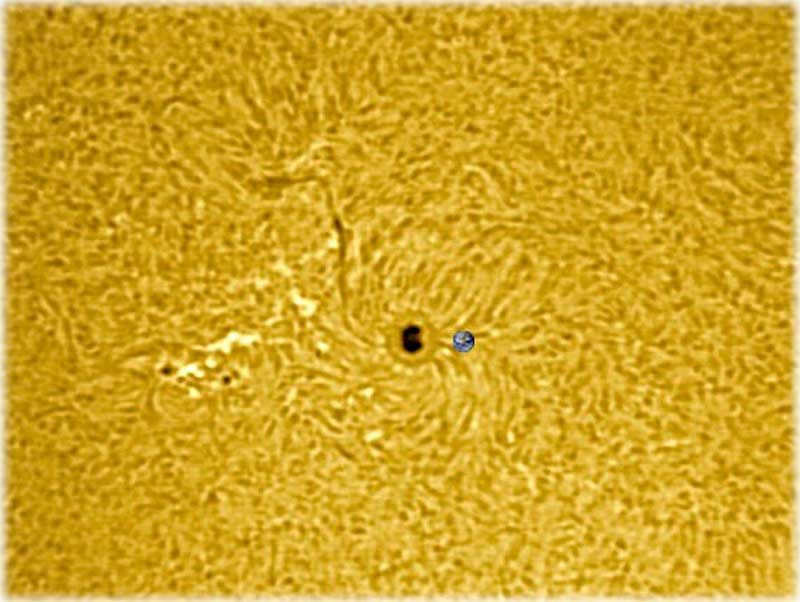
Earth compared to sunspot 1312 on 10/10/11 Provided by: Ron Cottrell.
The Sun’s diameter is 1,391,000 km
The Sun’s diameter is 864,000 miles.
The Sun’s diameter is 1,391,000,000 meters.
The Sun’s diameter is 109 times larger than the Earth
The radius of the Sun is 695,500 km.
The Sun’s radius remains constant regardless of whether it is measured from its center to the equator or to the poles. However, it is important to note that the rotation rate of other celestial objects can affect their radius.
Unlike other objects, the Sun rotates at a relatively slow pace, taking approximately 25 days to complete one revolution around its axis. As a result, the Sun is not flattened and maintains a consistent radius from its center to both the poles and the equator.
There are stars out there that exhibit significant differences. Take for instance the star Achernar, situated in the constellation Eridanus, which is flattened by a remarkable 50%. To put it differently, the distance from its poles is only half the distance from its equator. Under these circumstances, the star actually resembles a toy wolf.
Therefore, compared to these stars, the Sun is nearly a perfect sphere.
Astronomers utilize the radius of the Sun as a means to compare the sizes of stars and other celestial entities. For instance, a star with 2 solar radii is twice the size of the Sun. A star with 10 solar radii is 10 times larger than the Sun, and so forth.
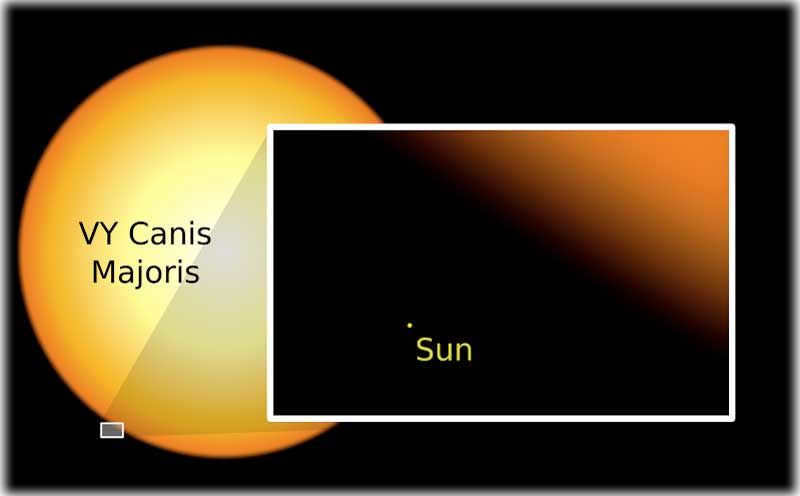
Star VY Canis Majoris is the largest known star in the universe.
Polaris, also known as the North Star, holds the title for being the largest star in the Ursa Minor constellation. Due to its close proximity to the northern astronomical pole, Polaris serves as the current northern polar star and is commonly used for navigation. With a solar radius of 30, Polaris is a massive star that is 30 times larger than our Sun.
Sirius, the brightest star in the night sky, outshines all other stars in terms of apparent stellar magnitude. Canopus, which is the second brightest star, is only half the size of Sirius. It’s no surprise that Sirius truly stands out. In reality, Sirius is a binary star system consisting of Sirius A, which has a solar radius of 1.711, and Sirius B, a much smaller star with a solar radius of 0.0084.
The diameter of the Sun is approximately 695,500 kilometers
or about 432,000 miles
In meters, the Sun’s diameter measures around 695,500,000 meters
It is also interesting to note that the Sun’s diameter is about 109 times that of the Earth
Gravitational Pull of the Sun
The Sun possesses an immense amount of mass, resulting in a significant gravitational pull. To put it in perspective, the Sun’s mass is 333,000 times greater than that of the Earth. Disregarding the Sun’s surface temperature of 5800 Kelvin and its composition primarily consisting of hydrogen, imagine the sensation of walking on its surface. The gravitational force experienced on the Sun’s surface is 28 times stronger than that of the Earth.
To put this into context, if your weight on Earth is measured as 100 kg, it would skyrocket to 2800 kg if you were to attempt to walk on the Sun’s surface. Needless to say, the gravitational force alone would result in an individual’s swift demise, not to mention the extreme heat and other factors.
The gravitational force of the Sun attracts all the matter (primarily hydrogen and helium) and shapes it into an almost flawless spherical form. As we move towards the Sun’s core, the temperature and pressure increase to such an extent that it facilitates nuclear fusion. The immense quantities of light and energy emanating from the Sun counteract the gravitational pull, preventing compression.
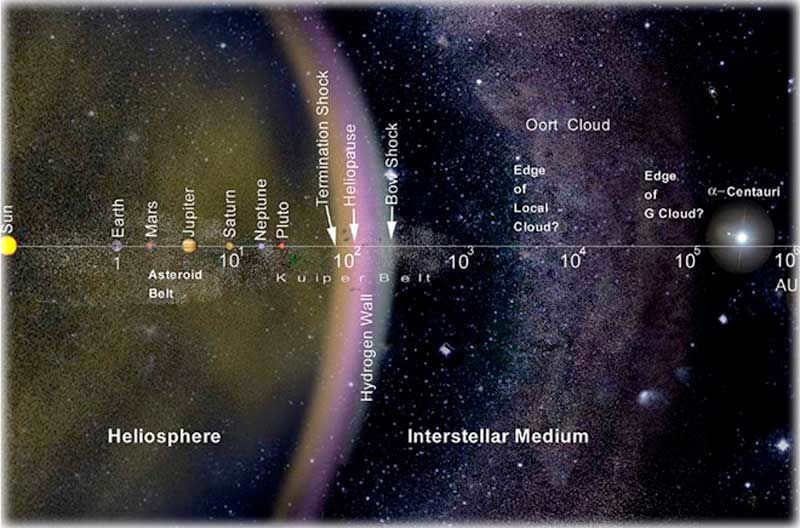
Diagram of the Solar System, including the Oort Cloud, displayed on a logarithmic scale courtesy of NASA.
Scientists define the Solar System as the region influenced by the gravitational pull of the Sun. It is known that the Sun maintains the distant planet Pluto in orbit, with an average distance of 5.9 billion kilometers. However, astronomers speculate that the Oort Cloud extends as far as 50,000 astronomical units (1 a.u. being the distance from Earth to the Sun), which is equal to 1 light-year. In fact, the gravitational influence of the Sun could potentially reach up to 2 light-years, at which point the gravitational pull of other stars becomes stronger.
Surface gravity of the Sun: 27.94 g
The Sun has a density of 1.4 grams per cubic centimeter, which is higher than that of water at 1 g/cm3. This means that if you were to find a large enough pool, the Sun would actually sink instead of float, which may seem counter-intuitive considering that it is primarily composed of hydrogen and helium, the lightest elements in the universe. However, the high density of the Sun is due to the force of gravity. To calculate the density of the Sun, we can use the formula mass divided by volume. The mass of the Sun is 2 x 1033 grams, and its volume is 1.41 x 1033 cm3, resulting in a density of 1.4 g/cm3.
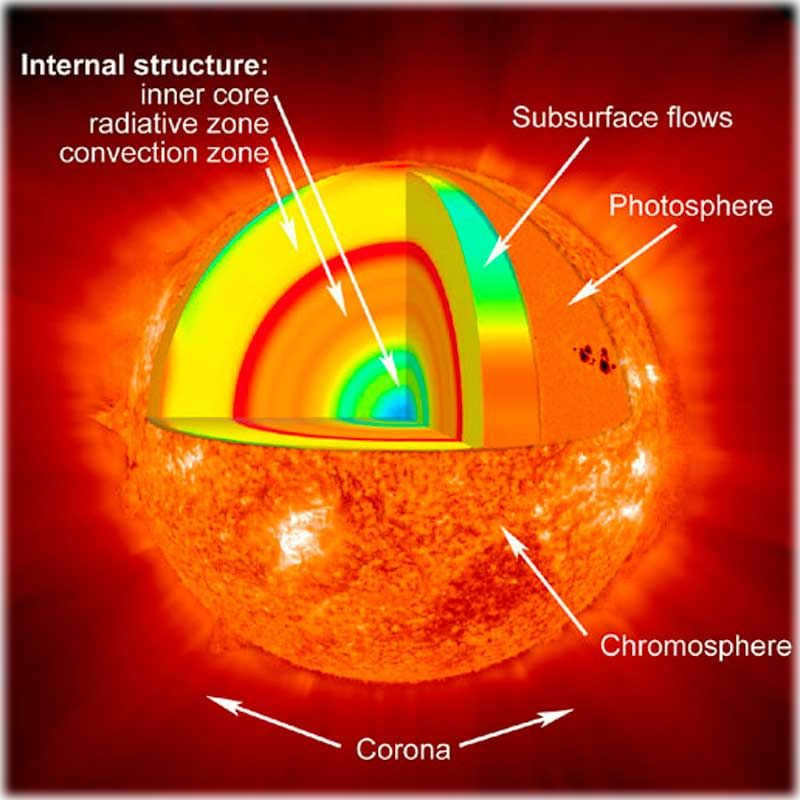
This image is from NASA and shows the interior of the Sun.
The Sun is held together by the force of gravity. While the outer layers of the Sun may be less dense, the inner regions are compressed by the strong gravity. At the core of the Sun, the pressure is more than 1 million metric tons per square centimeter, which is equivalent to over 10 billion Earth atmospheres. This immense pressure triggers nuclear fusion.
The density of the Sun is 1.622 x 105 kg/m3.
Size of the Sun
The size of the Sun is massive, with a volume of 1.412 x 1018 km3. That’s an incredibly large amount of cubic kilometers. Need a point of comparison? Consider this: the volume of the Sun is so immense that it could contain 1.3 million Earth-sized planets. Alternatively, it could be filled with nearly 1000 Jupiter-sized planets.
The Sun’s volume is approximately 1,412 x 1018 cubic kilometers.
The Sun’s volume is about 1,300,000 times larger than the Earth.
Circumference of the Sun
The Sun’s circumference measures 4,379,000 kilometers.
By comparison, the Earth’s equatorial circumference is 40,075 kilometers, making the Sun’s circumference 109 times greater. Additionally, the Sun’s circumference is 9.7 times larger than that of Jupiter.
When we gaze up at the radiant celestial body that has been providing warmth and light to our planet for billions of years, it is easy to overlook the fact that we are actually witnessing a functioning natural thermonuclear reactor. It is truly astonishing to think that the Sun, with its origin and composition similar to that of other stars in our galaxy, can be compared to such a powerful and intimidating device. While the processes occurring on the Sun are far from life-giving, it is undeniable that this star is responsible for sustaining life on Earth.

What Makes the Sun Unique?
What is it about the Sun, one of billions of stars in the Milky Way galaxy, that captivates the attention of astrophysicists and nuclear scientists? The answer lies in its proximity to Earth, allowing us to gain insight into the fundamental processes that have shaped the Universe since its inception. By studying the Sun, we can unravel the mysteries of stellar existence, from their birth to their dazzling demise. Unlike other stars, which are too far away to be observed in such detail, the Sun offers a front-row seat to its remarkable spectacle.
Our star, known as the Sun, serves as the central anchor of our solar system, governing the movements of the eight planets, asteroids, dwarf planets, comets, and various other celestial bodies. Scientifically classified as a G-class star according to the Harvard classification system, the Sun falls into the category of a Class II yellow dwarf based on Angelo Secchi’s classification, alongside Arcturus and Capella.
Unlike the vast majority of stars, which reside light-years away from our planet, our radiant Sun resides in close proximity. With a mere 150 million kilometers separating the Earth from the Sun, this distance pales in comparison to the immense expanses that dominate the Universe.
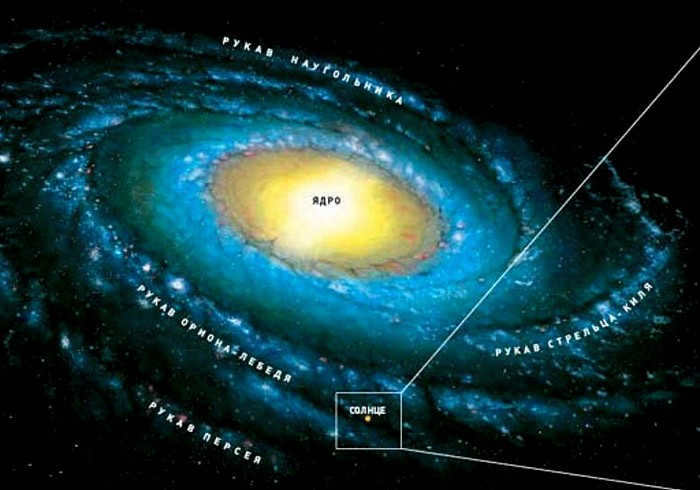
Proxima Centauri, the red dwarf nearest to the Sun, is situated 4 light years away. We are positioned at a considerable distance from nebulae and star clusters, which are the most bustling regions of the galaxy. This specific location has ensured that the Sun has been orbiting serenely for 14 billion years, ever since the formation of the Milky Way galaxy and our Universe as a whole. The star’s velocity in its orbit around the galactic center amounts to 200 km per second.

By the standards of our planet, a distance of 150 million kilometers may seem immense. However, even at this vast distance, we still feel the intense heat emitted by the Sun. The light from our star takes 8 seconds to reach us, continuing to warm and illuminate our Earth. The size of the Sun plays a significant role in this. Although it is classified as an average-sized star, its mass is over 700 times greater than the combined mass of all the other celestial bodies in our solar system. The diameter of the Sun is currently determined to be 1,392,020 kilometers, which is 109 times larger than the diameter of Earth.
The Sun, along with other stars, originated over 4-5 billion years ago. It was born in a gas cloud that formed from massive cosmic cataclysms. One theory suggests that these gas clouds emerged from the Big Bang, which caused a disturbance in space. These gas-dust clouds were primarily composed of hydrogen atoms, making up 99% of their composition. The remaining 1% consisted of helium atoms and other elements. Under the influence of gravitational forces, this combination of elements compressed tightly into a single substance.
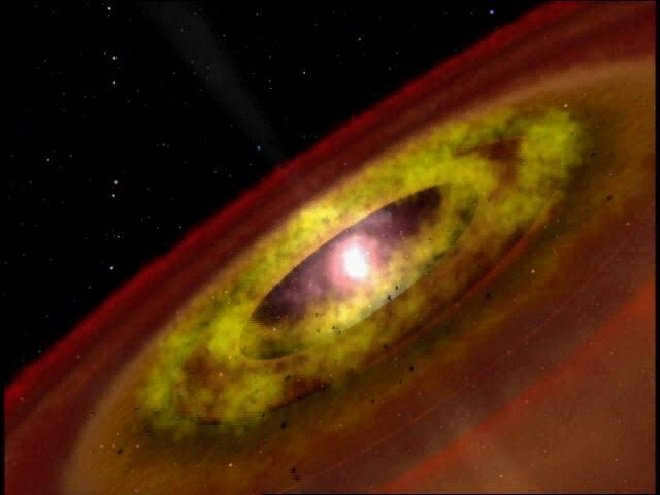
The speed of rotation increased as the mass grew. Atoms combined to form larger compounds, creating molecular hydrogen and helium. Due to physical processes and rapid rotation, a spherical formation emerged at the center of the cloud. This marked the appearance of a protostar, the earliest stage preceding the formation of a fully-fledged star. The initial amount of cosmic gas exceeded the current size of our solar system. Subsequently, under the influence of gravitational forces, the stellar matter started to contract tightly, increasing the mass of the future star.
As the protostar diminished in size, the pressure within the stellar matter escalated, resulting in a swift elevation of temperature within the gas formation. With a density and temperature of 100 million Kelvin, the thermonuclear fusion of hydrogen commenced.
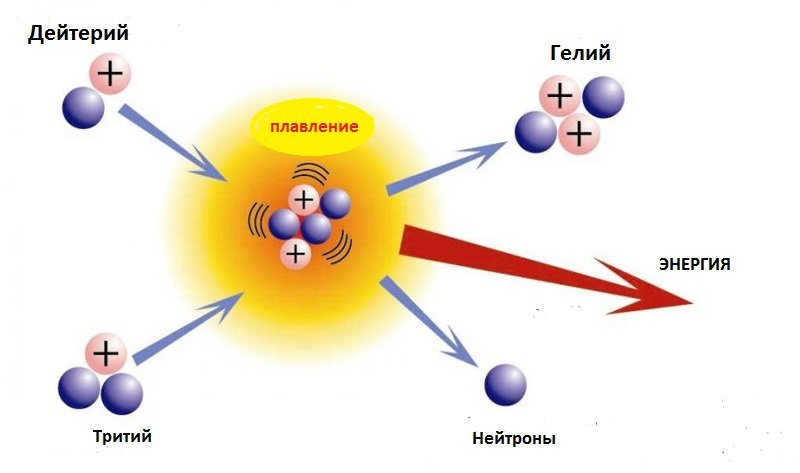
The process of thermonuclear fusion in the Sun results in the production of an immense amount of thermal and radiant energy, which spreads from the Sun’s inner regions to its surface. Every second, over 4 million tons of energy are emitted from the Sun’s surface into the vastness of outer space. Considering the fact that our star has been in existence for more than a billion years and continues to emit light and heat without any noticeable or significant changes, we can deduce that the hydrogen reserves within the Sun are indeed colossal. The exact timeline for when these reserves will be depleted remains uncertain, and can only be speculated through mathematical calculations. Based on the estimates provided by scientists, the Sun will continue to radiate warmth and light for approximately ten billion years, until the supply of thermonuclear fuel is completely exhausted.
Over time, the temperature of the surface will decrease while the star expands. Its brightness will also rise significantly, reaching 2700 times its current level. Mercury and Venus will be the initial planets to vanish. Eventually, Earth will cease to exist in tens of billions of years. The planet’s atmosphere will gradually dissipate under the impact of solar wind, causing water to evaporate and transforming the planet’s surface into a luminous mass of rock.
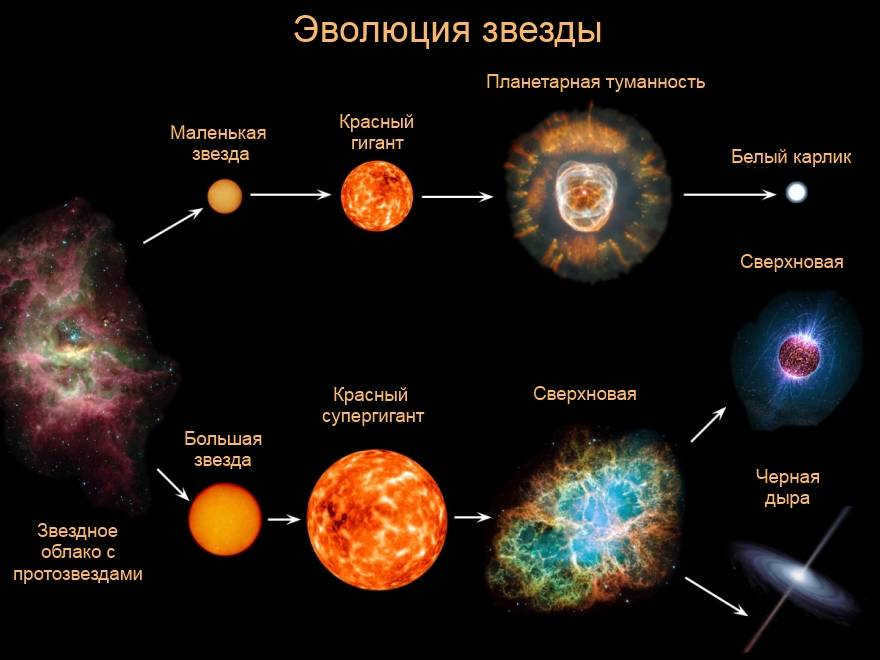
In the next few tens of millions of years, our star will go through this phase. Once the temperature in the core of the sun reaches 100 million Kelvin, the process of burning helium and carbon will begin. This will mark the start of a new chain reaction that will eventually deplete the sun. The star’s reduced mass will no longer be able to contain the outer shell, which will be scattered into space by the pulsating thermonuclear processes. As a result, a planetary nebula will form, with the core of the former star, now a white dwarf, at its center. In simpler terms, our hospitable star will transform into a small, dense, and hot object about the size of our planet after billions of years. In this state, the star will persist for a considerable amount of time, gradually fading away.
The composition and organization of the Sun
Being in close proximity to the Sun provides insights into its composition and organization, offering valuable data on the workings of this remarkable natural thermonuclear reactor and the various processes that take place within it. It is fascinating to explore the intricate structure of the Sun, which can be broken down into the following components:
After that, the layers of the solar atmosphere commence:
A star is not a solid object because it consists of a tightly compressed glowing gas within a spherical region. Solid substances cannot exist at such high temperatures. The Sun emits bright light and heat as a result of the same processes involved in the creation of an atomic bomb. These processes convert matter into energy under immense pressure and high temperatures. The primary fuel in the Sun is hydrogen, which makes up 73.5-75% of its composition. Therefore, the main source of heat is the thermonuclear fusion of hydrogen, which occurs mainly in the core, the central part of the star.
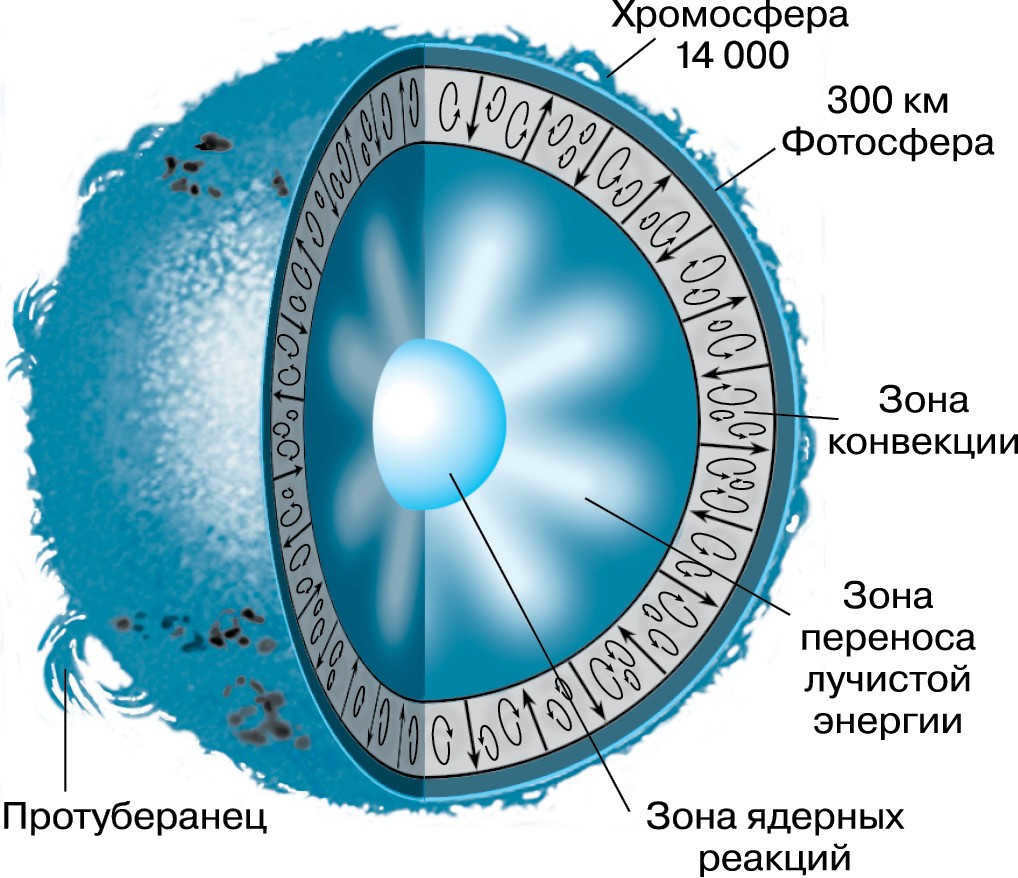
The core of the Sun has a size of about 0.2 times the size of the Sun itself. It is in this region that the primary processes occur, which enable the Sun to sustain its life and provide light and kinetic energy to the surrounding space. The transfer of radiant energy from the center of the star to the outer layers takes place in the radiant transfer zone. In this zone, photons originating from the core mix with ionized gas particles (plasma), resulting in an exchange of energy. Within this region of the solar sphere, there exists a unique area known as the tachocline, which plays a crucial role in the formation of the Sun’s magnetic field.
The convective zone is where the largest area of the Sun begins. This particular region accounts for nearly two-thirds of the Sun’s diameter. In fact, the radius of the convective zone alone is roughly equal to the diameter of our own planet, measuring approximately 140,000 kilometers. Convection is the mechanism by which dense and heated gas is distributed evenly throughout the interior of a star, ultimately making its way to the surface and releasing heat to the outer layers. This process is ongoing and can be observed by studying the Sun’s surface with a high-powered telescope.
Located at the interface between the internal structure and the atmosphere of the star is the photosphere – a slender shell that is only 400 km thick. This is the part of the Sun that is visible in our observations. The photosphere is made up of granules and has a heterogeneous structure, with dark spots interspersed with bright areas. This variation in appearance is caused by differences in the cooling time of the Sun’s surface. As for the non-visible portion of the Sun’s surface in the spectrum, we are referring to the chromosphere. The chromosphere is a dense layer of the Sun’s atmosphere that can only be observed during a solar eclipse.
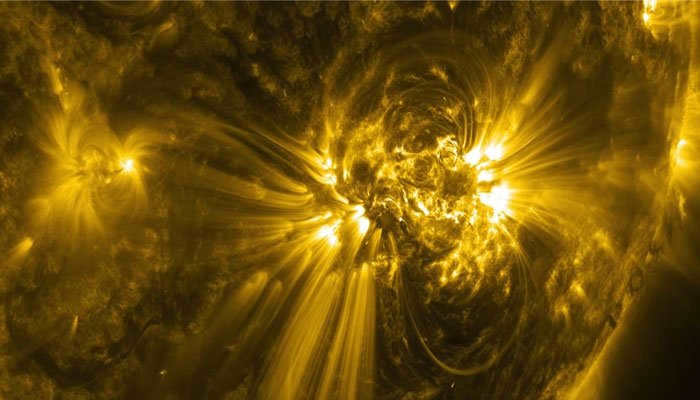
One of the most captivating things to observe in the realm of solar science are prominences, which bear a striking resemblance to long fibers, as well as the solar corona. These incredible formations are massive outbursts of hydrogen. Prominences emerge and gracefully traverse the surface of the Sun at an astonishing velocity of 300 kilometers per second. The temperature of these curved loops surpasses the staggering threshold of 10 thousand degrees. The solar corona, on the other hand, encompasses the outer layers of the Sun’s atmosphere, which are several times thicker than the star’s own diameter. The solar corona lacks a defined boundary, with only a fraction of this immense structure being visible.
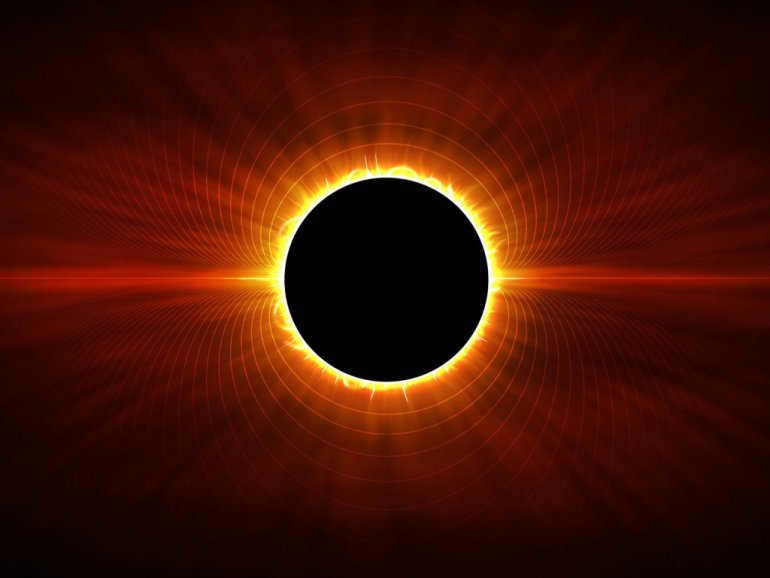
The last phase of solar activity corresponds to the phenomenon known as the solar wind. This occurrence is linked to the natural emission of matter from the outer layers of the sun into the encompassing cosmic expanse. The solar wind primarily comprises charged subatomic particles, specifically protons and electrons. The velocity of the solar wind can fluctuate between 300 kilometers per second and a maximum of 1500 km/s, depending on the solar activity cycle. This substance permeates the entire solar system, exerting its influence on all celestial bodies in close proximity.
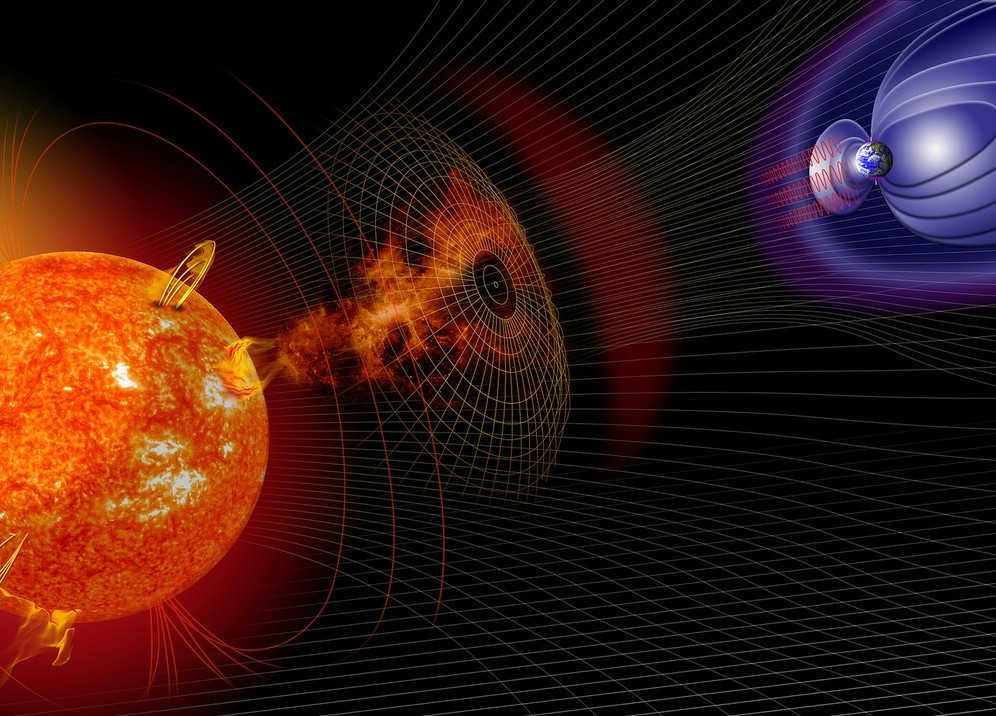
Most of the stars in the main sequence display a similar structure. However, other celestial bodies that we observe at night might exhibit a distinct structure. The primary distinguishing factor could be the star’s mass, which plays a crucial role in determining its level of stellar activity.
Characteristics of our star
Similar to the majority of stars in the universe, the Sun is the central component of our solar system. The Sun’s massive size and gravitational forces work together to maintain the orderly movement of celestial bodies around it. At first glance, our star may appear ordinary. However, recent discoveries have revealed the Sun’s uniqueness. For instance, it emits significantly less ultraviolet radiation compared to other stars of the same classification. Another distinguishing feature is the Sun’s stability. While many stars in the cosmos undergo fluctuations in intensity and brightness, our star continues to radiate with a consistent luminosity.
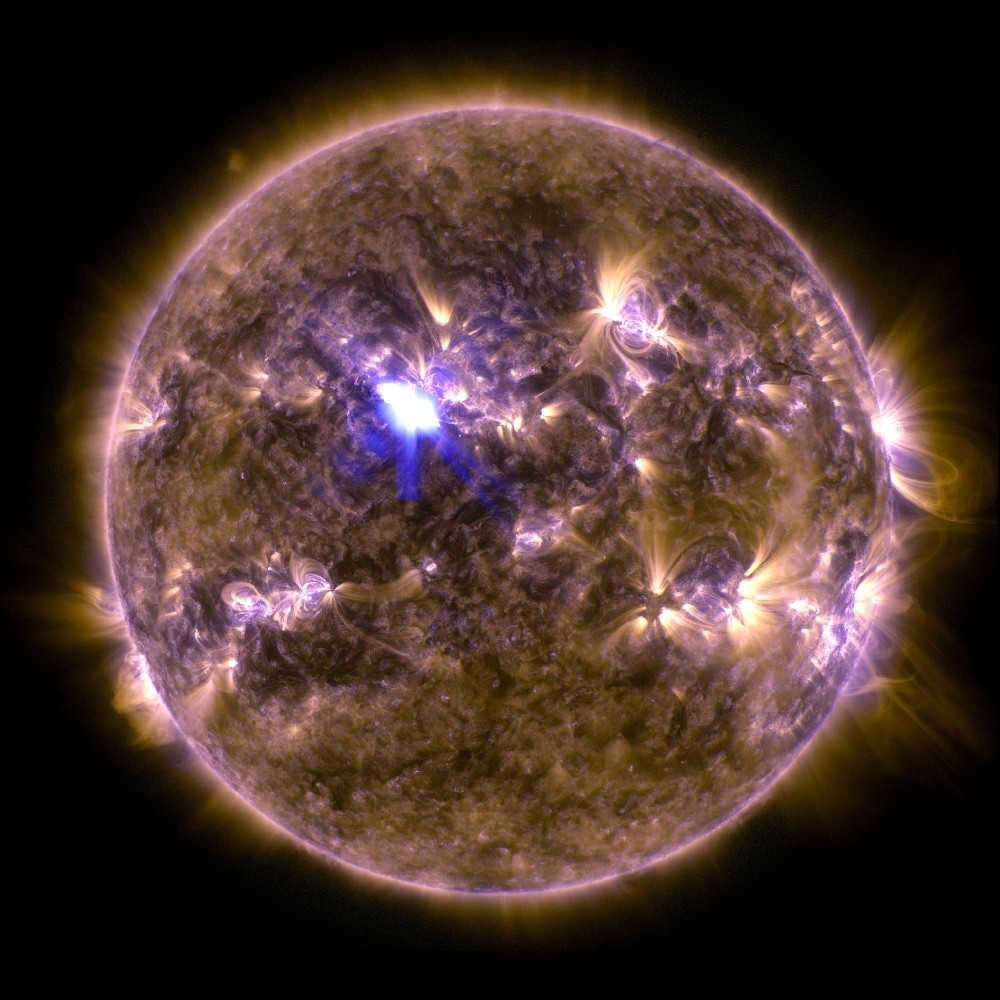
Conclusion
When evaluating the available data on the Sun, it is clear that our understanding of this celestial body is far from complete. Our knowledge of the Sun’s nature is based on mathematical and physical models that have been developed by scientists. By studying the processes that occur within the Sun and on its surface, we can gain insight into the phenomena and events that take place on our own planet. The Sun not only provides the energy that warms our planet, but it also emits powerful radio radiation and electromagnetic waves that impact the Earth’s biosphere. Any changes in the Sun’s activity have an immediate effect on the Earth’s climate and our overall well-being.
The Sun serves as the central star of our solar system, providing vital energy and sustenance to our planet through the process of photosynthesis. Additionally, it plays a crucial role in influencing the Earth’s climate and weather patterns.
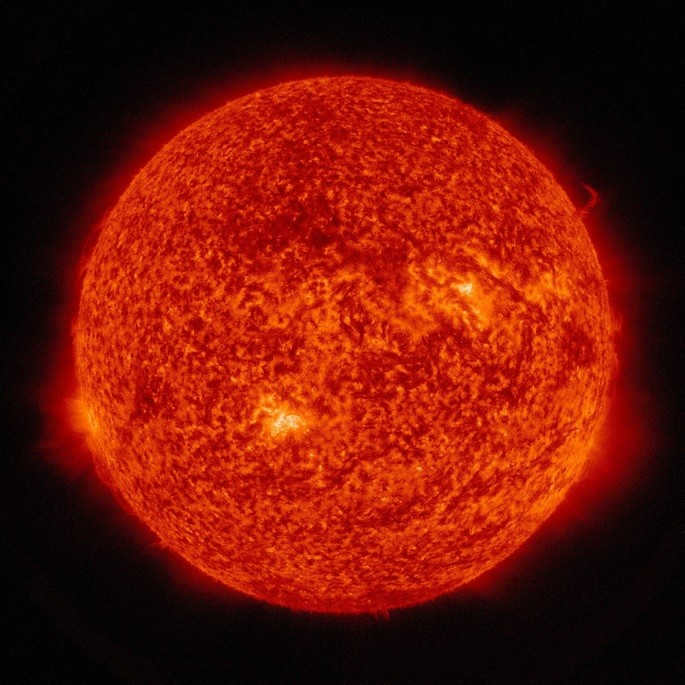
The Sun’s appearance may be yellow, but its true color is white. This optical illusion is caused by the influence of the atmosphere.
Compared to other stars in the galaxy, our Sun is much brighter, and only a small percentage of stars in the Milky Way are larger than the Sun.
The planets in our solar system are arranged in order of their distance from the Sun:
The etymology of the word “sun” is quite complex, as it has been widely used in various languages. The root of the word “sun” may have originated from Latin “sol” (which also means “sun”). In Old Russian (from the 11th century) and Old Slavonic, the word was pronounced as “sl’ntse”.
Brief summary
| On average – approximately 149.6 million kilometers (maximum – 152 million kilometers, minimum – 147 million kilometers). |
| Approximately 5500°C-6000°C |
| About 1.392 million kilometers |
| 1.988 × 10^30 kilograms |
| 696 thousand kilometers |
| The average density is about 1.408 grams per cubic centimeter. |
| About 5 billion years |
Suns’ Satellites
Counting all the satellites is currently deemed an impossible task. The Sun and other celestial bodies do not possess conventional satellites. Instead, they have planets and dwarf planets, along with their own satellites known as moons, as well as asteroids, meteorites, comets, and numerous other entities.
Nature of the Atmosphere and Structure
Composition of the Sun’s Atmosphere
The atmosphere of the Sun can be divided into three main layers:
- The photosphere, which is the visible, luminous surface and dense layer of the atmosphere.
- The chromosphere, which is the region immediately above the photospheric layers.
- The corona, which is the outermost and hottest layer of the atmosphere. The corona extends into space and is visible during eclipses.
The composition of the Sun’s atmosphere is primarily made up of:
Additionally, there are areas known as coronal holes, which appear darker because they contain less hot gas.
The solar wind is a stream of charged particles, predominantly protons and electrons, that are emitted by the Sun at speeds of approximately 400 km/s. This phenomenon occurs due to the high temperature and rapid movement of gases in the corona, which cannot be restrained by the Sun’s gravity.
Beneath the visible surface, the Sun consists of various layers:
- The Core: located at the center, it has a temperature exceeding 14,000,000°C and undergoes fusion reactions similar to those in a reactor. It is incredibly dense, with a density 150 times greater than that of water, and has a radius of 150-175 thousand km, which accounts for approximately 20-25% of the Sun’s total radius.
- The Radiation Zone: surrounding the core, this region is composed of dense and hot materials that transmit thermal radiation from the core to the outer regions of the Sun.
- The Convective Zone: extending from the radiation zone to the photosphere, which is the Sun’s outer surface, this zone plays a crucial role in transferring heat from the interior of the Sun. Heat is generated within the star and then transported upwards through columns of hot gas. At the top of the convective zone, the gas cools down and descends back towards the core, where it becomes heated once again.

The Sun is the central star of the Solar System. It serves as a gravitational anchor for eight planets, including our home planet Earth, as well as a variety of other celestial objects such as dwarf planets, satellites, asteroids, comets, and space debris. Due to its relatively close distance to Earth, scientists have been able to study and analyze its properties and structure more extensively compared to other stars in the known universe.
Basic details

Observing the Moon and the Sun from Earth.
When viewed from Earth, the Sun is situated at a distance of about 1.5-10 8 km, which is roughly equivalent to one astronomical unit. In the sky, the diameter of the Sun’s disk appears to be nearly identical to that of the Moon and measures just over half a degree.
Similar to all stars, the Sun is composed of gas and therefore lacks a distinct boundary that separates its various states of matter. The photometric edge, which is the point of inflection in the Sun’s brightness distribution near its limb, is used as a conditional boundary for its surface (a sharply defined edge). The distance from the center to this defined boundary is the conditional radius of the Sun, which measures 696 thousand kilometers. The Sun’s conceptual surface is in close proximity to its photosphere, the upper layer of its deepest atmosphere. The photosphere has the lowest temperature and the gases here are most opaque. As a result, the visible edge of the Sun is well-defined and easily distinguishable.
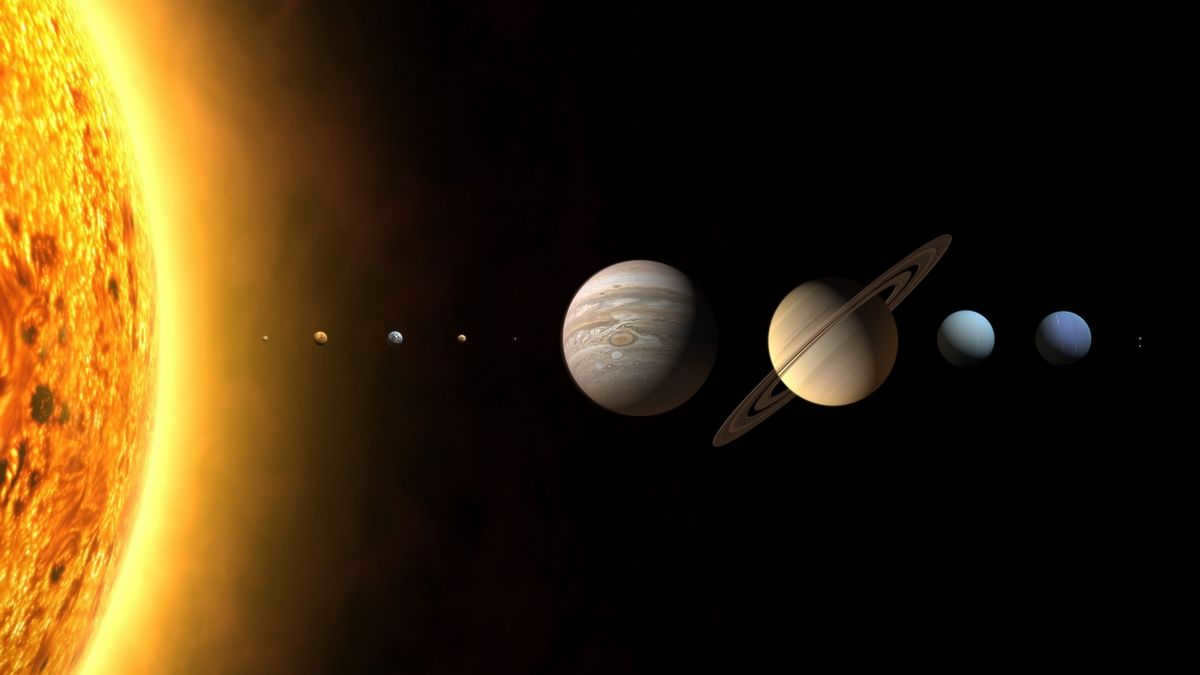
The Sun releases vast amounts of energy across the entire electromagnetic spectrum. Luminosity, another crucial characteristic of stars, measures 3.828-1026 W for our own star. The Sun generates this energy within its core, where thermonuclear reactions occur. However, a significant portion of this energy is lost as it traverses through space, particularly as it passes through planetary atmospheres. The energy that reaches our planet is a mere 1000 W/m². Nevertheless, this energy is an immense resource that is vital for the sustenance of life, the maintenance of a favorable climate, the process of photosynthesis in plants, and the production of oxygen. It also serves as an alternative source of electricity for humans.
The Sun stands out as one of the closest and brightest stars to us, ranking as the fourth brightest. With an absolute stellar magnitude of +4.83 m, it shines with remarkable luminosity.
The Sun’s surface temperature is approximately 6 thousand kelvin, and it becomes even hotter as you go deeper into its interior, reaching a scorching 10 million Kelvin.
The Sun is primarily composed of hydrogen, which makes up about 70% of its mass, and helium, which accounts for around 28%. The remaining 2% consists of various elements such as oxygen, carbon, nitrogen, sulfur, and a variety of metals. By analyzing the Sun’s spectral composition, scientists have determined that it is a typical main-sequence star and falls into the spectral class G, also known as a yellow dwarf. The Sun emits visible solar radiation, which has a continuous spectrum and is characterized by thousands of absorption lines.
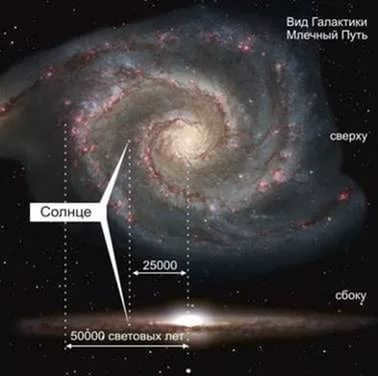
Our star can be found on the outer edge of the Milky Way galaxy, specifically in the Orion Arm (also known as the Local Arm). The Solar System is positioned near the inner boundary of this arm, within the Local Interstellar Cloud. This cloud is characterized by a higher density compared to the surrounding space, which is part of the more sparsely populated Local Bubble. The Local Bubble is a region that contains hot interstellar gas. The distance from the Sun to the center of the Galaxy is approximately 26 thousand light years. The Sun, along with its entire system, is in constant motion around the center of the Milky Way, traveling at a speed of 217 km/s. It takes about 250 million years for the Sun to complete one full orbit around the galaxy’s center.
It is believed that the Sun originated from the aftermath of one or possibly multiple supernovae, which occurred approximately 4.6 billion years ago. The presence of a significant amount of metals in the star supports this theory, as these metals could have been created through the nuclear reactions that accompanied the explosion. The Sun is expected to have a lifespan of around 10 billion years, and it is currently nearing the halfway point of its existence. Eventually, the Sun will expand into a red giant, engulfing any nearby planets, before collapsing and becoming a white dwarf. However, due to its relatively small mass, the Sun will not undergo a supernova explosion at the end of its life cycle.
The Sun possesses an immensely potent magnetic field, which undergoes temporal fluctuations. The orientation of the field also experiences periodic alterations every 11 years. These variations in the magnetic field give rise to a multitude of effects, including solar flares, sunspots, magnetic storms, auroras, and geomagnetic storms on Earth, among others. The collective occurrence of all these phenomena is known as solar activity.
Internal composition
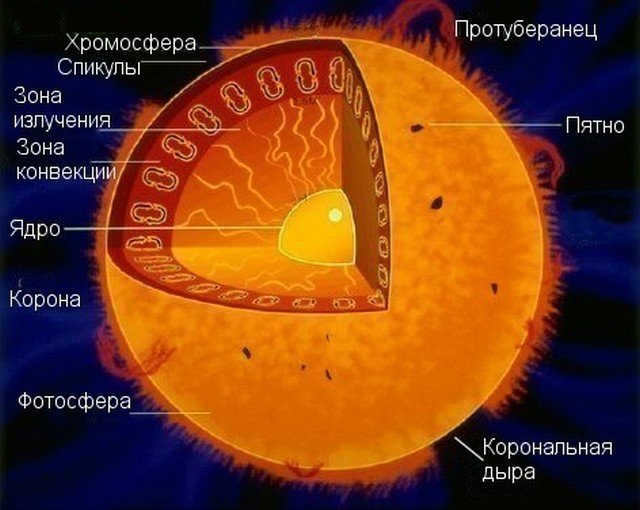
Due to the uneven distribution of matter in the sub-photospheric region, determining the exact structure of the Sun remains a challenge. To gain insight into the conditions within its core, scientists assume a uniform distribution of matter. The midpoint, located at a depth equal to half the radius, provides the closest approximation to the actual Sun. At this point, average values for density (1.41 g/cm³), pressure (6.6-10 13 ), and free fall acceleration (1.37-10 2 ) are calculated. The temperature at the midpoint reaches a staggering 2.8 million kelvin.
There are different kinds of thermonuclear reactions taking place in the interior of the Sun. The primary reactions involved are the hydrogen cycle and the carbon cycle. The first kind is also known as the proton-proton chain, as it involves the collision of protons. This chain of reactions results in the conversion of hydrogen atoms into helium atoms. The majority of the solar energy is produced through the hydrogen cycle, making it the most significant type of reaction in the Sun’s core. The second type, the carbon cycle, also leads to the conversion of protons into helium (alpha particles). However, these reactions only occur if there is carbon present in the environment. This cycle serves as the primary source of energy for stars with a slightly higher mass than the Sun, but in the Sun itself, it only contributes to around 1-2% of the synthesis.
During nuclear fusion reactions in the core of the Sun, neutrinos – particles that have no interaction with matter – are also generated, in addition to direct energy. These neutrinos travel through the star at nearly the speed of light and are hardly absorbed by matter, spreading throughout space. This is why by measuring their flux, we can obtain direct information about the conditions inside the Sun.
Therefore, the Sun’s thermal energy is produced solely in its core, and the rest of the Sun is heated by this energy as it gradually passes through all the layers up to the photosphere, where it is emitted as sunlight.
As the distance from the core increases, both the density and temperature decrease, resulting in the cessation of the carbon cycle. At a point approximately 0.3 times the radius of the Sun, the hydrogen cycle also comes to a halt due to a significant drop in temperature and density. Beyond this point, energy is solely transferred through heat conduction between the different layers. This particular region of the star, which extends up to 0.7 solar radii, is referred to as the radiative transfer zone.
Once we surpass the 0.7 solar radii mark, energy is transported through the motion of matter. The upper layers experience a substantial cooling effect due to the continuous outflow of radiation into the external environment. As a result, the gas becomes less ionized, leading to a decrease in opacity. This change in conditions gives rise to convection, where colder layers mix with hotter ones and become heated. The convective zone extends up to the initial level of the Sun’s atmosphere.
Atmosphere
The atmosphere is a layer of gases that surrounds the Earth and is held in place by gravity. It is composed primarily of nitrogen, oxygen, and small amounts of other gases such as carbon dioxide, water vapor, and argon. The atmosphere plays a crucial role in maintaining life on Earth by regulating temperature, protecting against harmful solar radiation, and providing the oxygen necessary for respiration. It is divided into several layers, including the troposphere, stratosphere, mesosphere, thermosphere, and exosphere, each with its own unique characteristics and functions. The atmosphere is constantly in motion, with air currents and weather systems circulating around the globe. Through human activities such as pollution and deforestation, the composition and balance of the atmosphere can be disrupted, leading to adverse effects on the environment and climate. Therefore, it is important to understand and protect the atmosphere for the well-being of future generations.
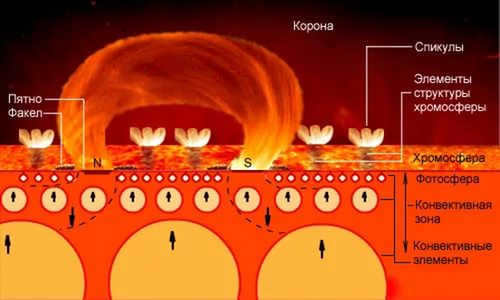
The Sun’s Weight
Chromosphere
can be rephrased as
Outer layer of the Sun’s atmosphere
.
The chromosphere, one of the outer layers of the Sun, comes after the photosphere. To observe it, special filters are needed because its brightness is much lower compared to the previous layer. This shell has a thickness of approximately 2000 km. The chromosphere’s spectrum contains numerous helium lines, which led to the discovery of this element in the Sun’s composition. When observed, the chromosphere appears reddish due to the powerful radiation emitted by the hydrogen Hα line in the visible spectrum. The structure of the chromosphere is highly varied. From its upper boundary, hot matter outbursts called spicules occur. These spicules are elongated in shape and can reach lengths of several thousand kilometers with a thickness of about a thousand kilometers. They burst out of the chromosphere at speeds of several tens of kilometers per second, entering the next layer called the corona, and eventually dissolving. The corona’s substance can also fall back into the chromosphere. The cluster of spicules on the chromosphere’s surface is known as the chromospheric grid. Other features in this layer are found in regions with strong magnetic fields. These include flocculi, which are light-colored “clouds” surrounding sunspots, and fibrils, which are dark bands of various sizes.
Corona
The corona, which is the outer part of the atmosphere, is extremely rarefied. It is a million times less bright than the photosphere, making it visible to the naked eye only during total solar eclipses. In terms of brightness, this atmospheric layer can be divided into two parts: the lower part, which is bright and thin (0.2 – 0.3 of the Sun’s radius), and the outer region, which is less bright. The shape of the corona is irregular, with rays that can extend beyond 10 times the radius of the Sun. Additionally, the shape of the corona is constantly changing over time.
The temperature of the corona is extremely high – reaching several million kelvins, with a maximum of 20 million. However, certain regions on its surface exhibit significantly lower temperatures, around 600 thousand K. These regions are known as coronal holes, distinguished by their darker appearance compared to the surrounding areas. Notably, the Sun’s magnetic force lines originate from these holes, while matter flows out from them at a more rapid pace. The unevenness of the corona’s surface can be attributed to the continuous energy eruptions transpiring within it, escaping millions of kilometers into the vastness of space.
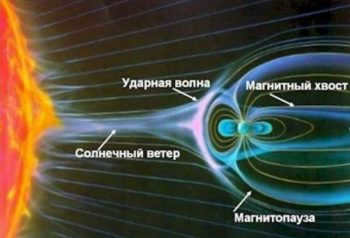
The corona extends far beyond the Sun, covering vast distances. It stretches all the way to Earth and even extends past its orbit, reaching a distance of approximately 100 astronomical units. Plasma continuously flows out from the corona, with its velocity increasing as it moves farther away from the star. This outflow of plasma is commonly referred to as the solar wind, and it primarily originates from coronal holes. As the solar wind approaches the planets, it reaches supersonic speeds (reaching speeds of about 300-400 km/s when it reaches Earth). When it interacts with the magnetic fields of the planets, it gives rise to the formation of shock waves.
Magnetic Field
The magnetic field of the Sun, similar to that of all stars, is incredibly strong and is created by electric currents that form in the plasma. This magnetic field plays a crucial role in all the processes that occur within the star. It originates in the convective zone and, driven by the convective and turbulent movement of the plasma, extends into the photosphere.
The structure of the Sun’s magnetic field is intricate. The size of the area being studied determines the strength of the field and the organization of its magnetic lines. The larger the surface area, the weaker the field’s strength and the more orderly the magnetic lines become. Based on this characteristic, the solar magnetic field can be classified into two types – global and local.
The size of the worldwide field is comparable to the surface area of the Sun. Associated with this global field is the average magnitude of the Sun’s magnetic field, which is approximately several Gs (gauss – a unit of magnetic induction). On a global scale, the Sun can be roughly considered a dipole. The configuration of the field and its polarity are influenced by the cyclicity of solar activity. The predominance of one polarity over the other in the northern and southern hemispheres shifts with each successive cycle. During the minimum of the 11-year cycle, the strengths at the poles reach their maximum, and as the maximum approaches, their values gradually decrease to zero. After that, the polarity of the dipole changes, and with the start of a new cycle, the magnitudes at the poles begin to increase again. Hale’s law is derived from this observation – the complete cycle of change in the global magnetic field on the Sun lasts 22 years.
Local solar fields exhibit significantly less organization and have much higher magnitudes, typically around 1 kGs (and even several kilogauss in sunspots during periods of peak activity). The local field can no longer be classified as a dipole, as it frequently displays varying polarities across different regions of a given surface area.
Solar cycles and activity
The arrangement of the magnetic field in the Sun’s atmosphere is in a constant state of flux. The exact reasons for these changes are still not completely understood. They may occur due to the concentration of magnetic fields in various layers of the star, and their periodic intensification could be attributed to a process similar to the stimulation of the magnetic field in a dynamo (referred to as the magnetic dynamo).
As a result of magnetic induction, the solar plasma is unable to move perpendicular to the magnetic field lines, but it can freely move along them. Because of this, the plasma primarily moves along the force lines or incorporates the weaker force lines into itself (referred to as “embedding” of the field in the plasma).
When magnetic fields slightly increase, they can give rise to bright phenomena known as atmospheric flares that can be observed around sunspots. These flares have a cell-like structure and can form grid-like patterns that cover a large portion of the photosphere. Interestingly, flares can occur even without the presence of sunspots, sometimes serving as precursors to their formation or as remnants of an active region. These flares are characterized by a temperature that is 200-300 K higher than their surrounding unaffected area. Typically, they have a lifespan of several weeks to a few months.
The chromosphere and lower layers of the corona are home to loops of magnetic field lines that emerge on the surface, resulting in solar flares – the most powerful manifestations of solar activity. These flares are characterized by a rapid and dramatic change in the configuration and strength of the magnetic field. Within seconds, either a long “tourniquet” shape is formed or a region tens of thousands of kilometers in length becomes engulfed. A solar flare produces a sudden increase in radiation intensity across the entire spectrum, including gamma rays. These bursts of intensity occur within minutes and fade quickly after reaching their peak. In addition to the increase in brightness, flares also emit gases and plasma. Since plasma closely interacts with the magnetic field, much of its energy is converted into heat, raising the temperature of the gas to tens of millions of kelvins and accelerating the plasma clouds. The acceleration of these clouds also leads to the acceleration of individual particles, such as protons and electrons, generating streams of solar cosmic rays and solar wind. While the energy of these rays is lower than that of galactic rays, they have a greater impact on Earth’s magnetosphere and upper atmosphere. Near Mercury and Venus, these streams encounter no obstacles as these planets lack their own magnetic field. However, near Earth, Jupiter, and Saturn, the planets’ own magnetic field influences coronal emissions, causing disruptions in the magnetosphere. In general, coronal matter and solar wind appear to flow around the planet’s magnetic field, distorting it. Plasma can penetrate the magnetosphere through gaps between closed lines of force at the poles, resulting in the appearance of polar lights.
Moreover, the chromosphere and corona exhibit prominences – active and extensive aggregations of plasma. These prominences come in various shapes and sizes, but they most commonly appear as arcs perpendicular to the Sun’s surface. With temperatures around 10,000 K, they are cooler than the surrounding plasma. Prominences are the largest and most stable features found in the Sun’s atmosphere. They can stretch for hundreds of thousands of kilometers in length and up to ten thousand kilometers in width. Their durability stems from the magnetic field frozen within the plasma. As the lower portions of prominences reside in the upper layers of the chromosphere and the upper portions extend into the corona, they serve as a connection between these atmospheric layers, facilitating the exchange of matter between them. Prominences originate within sunspot groups during their developmental phase and can undergo sudden activation, often accompanied by explosions and the ejection of matter into the corona.
The level of activity in the Sun’s atmosphere is not constant. Changes in the magnetic field’s poles result in variations in the number and grouping of sunspots, which in turn impact other manifestations of activity. The activity level at a given time is measured by the Wolf number, which takes into account the number of spots and spot groups on the Sun’s surface. The highest Wolf number indicates peak solar activity, while a low number (indicating few or no spots) represents minimum activity. On average, the alternating periods of high and low activity occur every 11 years, although this cycle can be shorter or longer. A complete cycle of activity changes typically lasts around 22 years. For instance, the most recent minimum occurred in 2008, while the maximum was observed in 2000. Additionally, there are longer cycles that occur, with certain epochs showing weaker solar maxima and nearly absent spots during the minima. These larger cycles have a duration of approximately 2300 years.
Studying
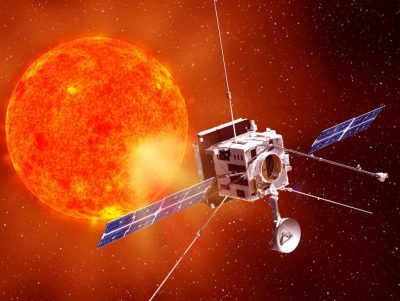
Throughout history, humanity has held a deep fascination with the Sun and has actively pursued its study. What began as simple observations evolved into measuring time through sundials, marking the Sun’s position in the sky throughout the day. Ancient monuments and megaliths were utilized to measure the duration of daylight, determine the summer solstice, and mark the equinoxes. The ancient Greeks, while observing the Sun’s annual motion on the celestial sphere, initially classified it as one of the planets. However, within Ancient Greece itself, the first theories emerged that the Sun was not a planet but rather a massive luminous sphere. This belief was held by the ancient Greek philosopher Anaxagoras, who faced condemnation and imprisonment for his ideas.
Chinese astronomers on the opposite side of the continent were the pioneers in spotting sunspots as far back as two centuries BC. In the 12th century, a medieval English historian sketched them for the first time.
The instrumental examination of the Sun commenced in 1610 with Galileo’s invention of the first telescope. Galileo was the one who first deduced that the spots were actually part of the Sun’s surface and not shadows of planets crossing its disk. By observing their movement, he also managed to determine its rotation period.
The era of spectroscopy started in the 19th century. Astronomer Petro Angelo Secchi was the first to split sunlight into distinct colors. His research was carried on by Fraunhofer, who examined the composition of stars through their spectra and identified absorption lines. In 1868, French scientist Pierre Jansen identified helium while studying the spectra of the solar chromosphere and prominences.
In the same century, there was a discussion regarding the origins of energy in the Sun’s interior. In 1848, a hypothesis was put forward suggesting that the star is heated by continuous meteor impacts. However, it was soon realized that this mechanism would also result in significant heating of any planet, including Earth. Another, more plausible hypothesis was proposed by Kelvin and Helmholtz, which suggested that the Sun’s thermal energy was generated through gravitational compression. This idea led to an estimation of the Sun’s age at 20 million years, which contradicted geological evidence. Nevertheless, this mechanism was accepted for a considerable period of time. In the 20th century, Rutherford put forward a hypothesis of thermonuclear fusion occurring in the Sun’s core due to high temperature and pressure. This theory was subsequently confirmed and further developed in the 1930s, when the two main nuclear reactions responsible for the release of energy in the Sun were identified.
The first artificial satellites were launched in 1957, marking the beginning of space studies of the Sun. The Luna-1 and Luna-2 satellites detected the solar wind in 1959, and NASA’s Pioneer satellites further investigated it from 1960 to 1968. In 1973, the first solar space observatory was launched to observe the corona and discover coronal mass ejections. Throughout the 1980s and 1990s, numerous satellites and probes were launched to observe the Sun in various spectral ranges. The Ulysses probe, launched in 1990, was specifically designed to study the polar regions of the Sun and investigate the solar wind and magnetic field fluxes at high latitudes. Presently, advanced satellites and observatories enable comprehensive spectral studies of the Sun’s atmosphere, the dynamics of its magnetic field, and its correlation with solar activity.
The Sun and humanity






